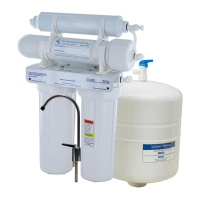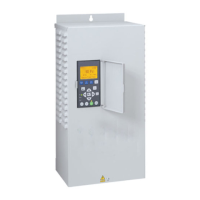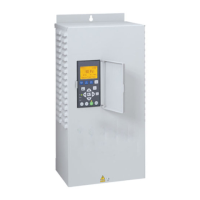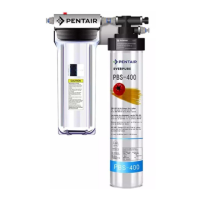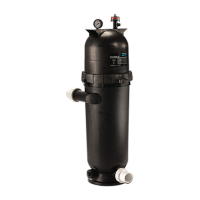96
SECTION 13: Troubleshooting
13.3 Testing Submersible Motor
Insulation and Winding
Resistance
Insulation Resistance
1. Turn off power!
2. Set the ohmmeter to RX100K ohms.
3. Zero the ohmmeter.
4. Connect one lead to the metal drop pipe (or to ground
if the pipe is plastic).
5. Connect the other lead to any motor lead.
6. Check each power lead.
7. Compare results to the following table.
Resistance Indicates
20K ohm Damaged motor, possible result of lightning strike.
500K ohm Typical of older installed motor in well.
2 M ohm Newly installed motor
10 M ohm Used motor, measured outside of well
20 M ohm New motor without cable
Winding Resistance
1. Turn off power!
2. Set the ohmmeter to RX1 ohm range. For values over
10, use the RX10 ohm scale.
3. Zero the ohmmeter.
4. Compare results to resistance shown in motor
specifications table.
Three Phase Motors
Measure each line to each other (three readings).
Compare these to the line-to-line resistance shown in
motor specification table.
• Ifallleadsmeasurewithinthetablespecifications,
the leads and motor are okay.
• Ifaleadshowsahigherresistance,thenthereis
an open in the cable or winding. Check for secure
cableconnections.
• Ifaleadshowslowerresistance,thenthereisashort
circuit in the cable or winding.
Single Phase Motors: 3-wire
• Measurethemainwinding(blacktoyellow).
• Measurethestartwinding(redtoyellow).
• Comparethesereadingswiththemotor
specificationtable.
• Ifthereadingsvarywidely(somehigh,somelow),the
leads may be switched. Confirm that the cable colors
are correct.
Single Phase Motors: 2-wire
• Measuretheresistancebetweenthetwolines.
• Comparethereadingwiththemotor
specificationtable.
• Ifthereadingshowsahighresistance,theremay
be an open in the cable or motor. Check for secure
cableconnections.
• Ifthereadingshowsverylowresistance,theremaybe
a short in the cable or motor.
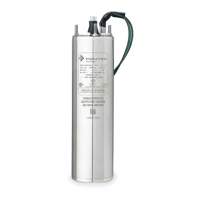
